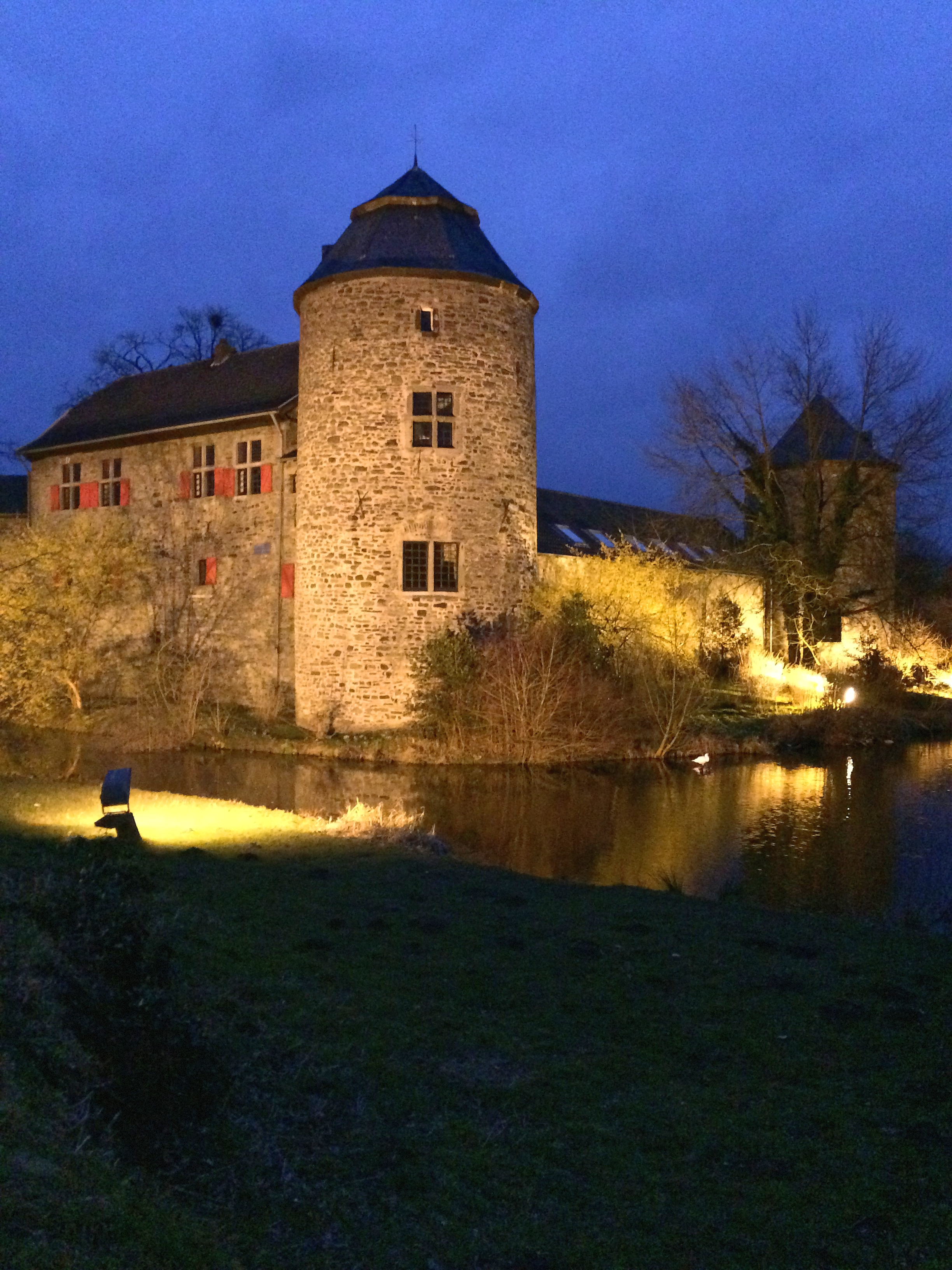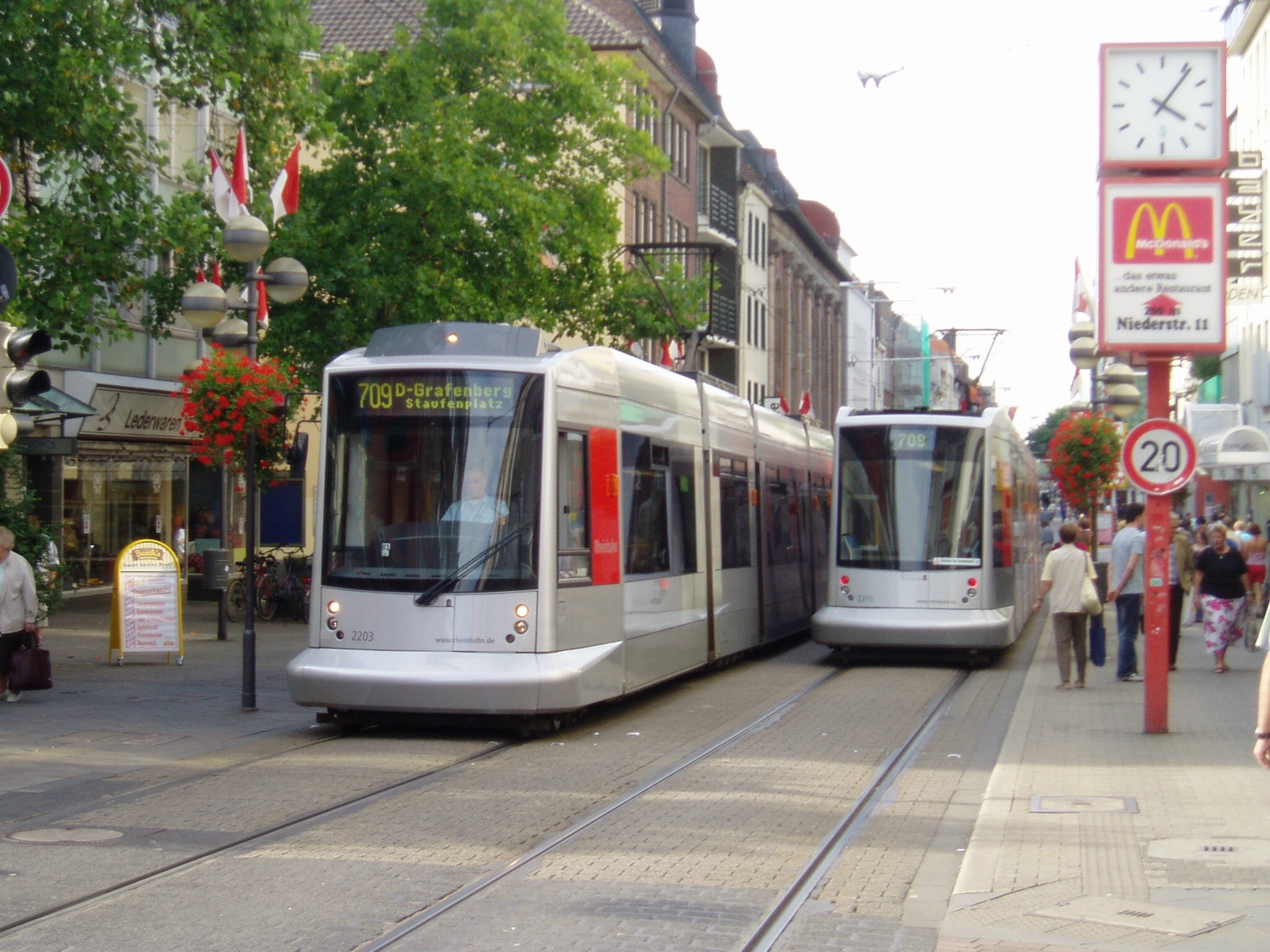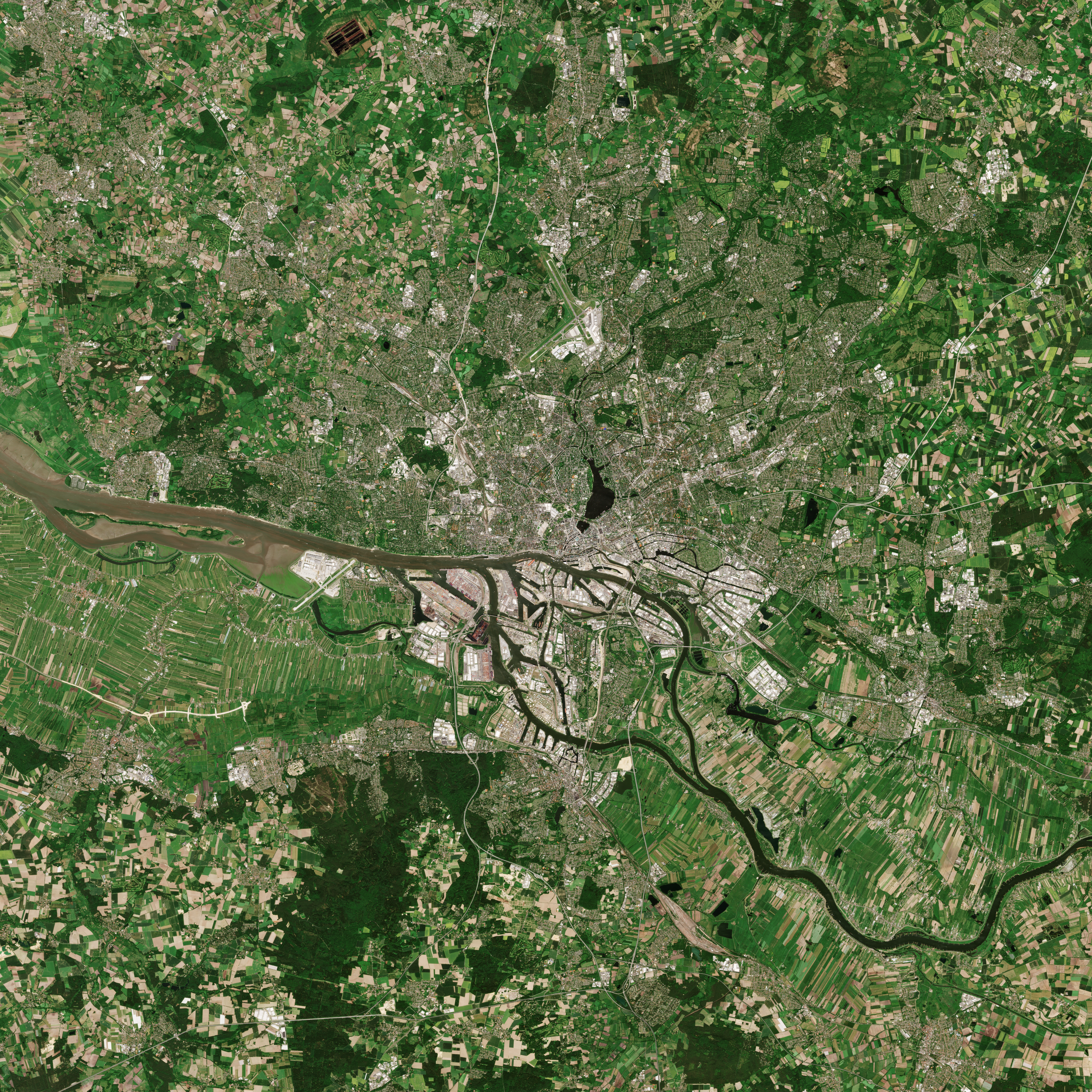|
Düsseldorf
Düsseldorf ) is the capital city of North Rhine-Westphalia, the most populous state of Germany. It is the second-largest city in the state after Cologne and the List of cities in Germany with more than 100,000 inhabitants, sixth-largest city in Germany,, with a 2022 population of 629,047. The Düssel, from which the city and the borough of Düsseltal take their name, divides into four separate branches within the city, each with its own mouth into the Rhine (Lower Rhine). Most of Düsseldorf lies on the right bank of the Rhine, and the city has grown together with Neuss, Ratingen, Meerbusch, Erkrath and Monheim am Rhein. Düsseldorf is the central city of the metropolitan region Rhine-Ruhr, the List of EU metropolitan areas by GDP, second biggest metropolitan region by GDP in the European Union, that stretches from Bonn via Cologne and Düsseldorf to the Ruhr (from Duisburg via Essen to Dortmund). The ''-dorf'' suffix means "village" in German (English cognate: ''thorp''); ... [...More Info...] [...Related Items...] OR: [Wikipedia] [Google] [Baidu] |
Low Franconian
Low Franconian, Low Frankish, NetherlandicSarah Grey Thomason, Terrence Kaufman: ''Language Contact, Creolization, and Genetic Linguistics'', University of California Press, 1991, p. 321. (Calling it "Low Frankish (or Netherlandish)".)Scott Shay: ''The History of English: A Linguistic Introduction'', Wardja Press, 2008, p. 73. (Having "Old Low Franconian" and mentioning "Old Low Frankish" and "Old Netherlandic".) is a linguistic category used to classify a number of historical and contemporary West Germanic varieties closely related to, and including, the Dutch language. Most dialects and languages included within the category are spoken in the Netherlands, northern Belgium (Flanders), in the Nord department of France, in western Germany (Lower Rhine), as well as in Suriname, South Africa and Namibia. Terminology The term ''Frankish'' or ''Franconian'' as a modern linguistic category was coined by the German linguist Wilhelm Braune (1850–1926). He divided Franconian which ... [...More Info...] [...Related Items...] OR: [Wikipedia] [Google] [Baidu] |
Meerbusch
Meerbusch () is a town in Rhein-Kreis Neuss, North Rhine-Westphalia, Germany. It has been an incorporated town since 1970. Meerbusch is the municipality with the most income millionaires in North Rhine-Westphalia. Geography Meerbusch is a town in the Lower Rhine region of northwestern Germany. It is located between Krefeld and Düsseldorf near Düsseldorf Airport and Messe Düsseldorf. Other neighbouring towns and cities are Duisburg, Kaarst, Willich and Neuss. The total area is divided into eight villages of varying sizes which used to be independent communes before the municipality was founded. Economy Many companies have set up offices in the town's several light industrial estates. Most significantly, IMAV-Hydraulik GmbH has its headquarters in "Breite Straße" and Epson, Ernst-Rademacher GmbH, Nedap, ATHLON, BOBST GROUP and Kyocera Mita have settled in the business park at Mollsfeld, part of a large development called "Mollsfeld North". Thanks to its excellent motorway ... [...More Info...] [...Related Items...] OR: [Wikipedia] [Google] [Baidu] |
Ratingen
Ratingen ( li, Rotinge) is a town in the district of Mettmann in North Rhine-Westphalia, Germany. It lies in the northwestern part of Berg about 12 km northeast of Düsseldorf. Administration With a communal reform of 1975 the independent municipalities of Breitscheid, Eggerscheidt, Hösel, Lintorf (seat Angerland) as well as the local part of Homberg and the municipality of Homberg-Meiersberg (seat Hubbelrath) were added into the city of Ratingen. History Ratingen was settled before 849. Since the Middle Ages, the Ratingen area belonged to the count and later dukes of Berg. On December 11, 1276 the settlement received city rights. Ratingen was one of the four places of Berg which experienced an economic boom in the end of the Middle Ages, but slowed during the Thirty Years' War. At the beginning of the Industrial Age, the first manufacturing plants opened in 1783. In Cromford the first mechanical spinnery of Europe opened, which grew into the '' Textilfabrik Cromfor ... [...More Info...] [...Related Items...] OR: [Wikipedia] [Google] [Baidu] |
Neuss
Neuss (; spelled ''Neuß'' until 1968; li, Nüss ; la, Novaesium) is a city in North Rhine-Westphalia, Germany. It is located on the west bank of the Rhine opposite Düsseldorf. Neuss is the largest city within the Rhein-Kreis Neuss district. It is primarily known for its historic Roman sites, as well as the annual Neusser Bürger-Schützenfest. Neuss and Trier share the title of "Germany's oldest city"; and in 1984 Neuss celebrated the 2000th anniversary of its founding in 16 BCE. History Ancient Rome Neuss was founded by the Romans in 16 BC as a military fortification (''castrum'') with the current city to the north of the castrum, at the confluence of the rivers Rhine and Erft, with the name of Novaesium. Legio XVI Gallica ("Gallic 16th Legion") of the Roman army was stationed here in 43-70 AD. It was disbanded after surrendering during the Batavian rebellion (AD 70). Later a civil settlement was founded in the area of today's centre of the town during the 1st ... [...More Info...] [...Related Items...] OR: [Wikipedia] [Google] [Baidu] |
Lower Rhine
The Lower Rhine (german: Niederrhein; kilometres 660 to 1,033 of the river Rhine) flows from Bonn, Germany, to the North Sea at Hook of Holland, Netherlands (including the Nederrijn or "Nether Rhine" within the Rhine–Meuse–Scheldt delta); alternatively, ''Lower Rhine'' may refer to the part upstream of Pannerdens Kop, excluding the Nederrijn. Almost immediately after entering the Netherlands, the Rhine splits into numerous branches. The main branch is called the Waal which flows from Nijmegen to meet the Meuse; after which it is called Merwede. Near Rotterdam the river is known as Nieuwe Maas, and becomes the Nieuwe Waterweg flowing into the North Sea at Hook of Holland. The downstream Lower Rhine is a low lying land. Up to the beginning of industrialization roughly one fifth of the land area could only be used as pasture: an endless meadow, which could not be farmed because of flooding and a high ground-water level. However, the remaining soils of the Lower Rhine w ... [...More Info...] [...Related Items...] OR: [Wikipedia] [Google] [Baidu] |
Düsseltal
Düsseltal is a quarter of Düsseldorf within Borough 2, with a rather well-off population and developed around an old convent. It is also known as Düsseldorf-Zoo (after Düsseltal's S-Bahn station), because, until 1943, there was a zoological garden in Düsseltal. The word Düsseltal is German for the valley of the river Düssel. Geography Düsseltal's neighboring quarters are, clockwise from the north: Rath, Grafenberg, Flingern, and Derendorf. It is also bordered by the Cologne–Duisburg railway and the Grafenberg forest. Düsseltal has an area of , and 28,032 inhabitants (2020). History There was a low population density in the region between Düsseldorf (proper) and Grafenberg until the end of the 19th century. In the Middle Ages, the knights Hayc von Flingern ruled the town. The oldest buildings of Düsseltal are the ''Speckerhöfe'' and the ''Buscher Mühle'', first mentioned in the 14th century. Jan Wellem, Elector Palantine, donated the ''Speckerhö ... [...More Info...] [...Related Items...] OR: [Wikipedia] [Google] [Baidu] |
Düssel
The Düssel is a small right tributary of the river Rhine in North Rhine Westphalia, Germany. Its source is east of Wülfrath. It flows westward through the Neander Valley where the fossils of the first known to be Neanderthal man were found in August 1856. At Düsseldorf it forms a river delta by splitting into four streams (Nördliche Düssel, Südliche Düssel, Kittelbach, Brückerbach), which all join the Rhine after a few kilometres. The Nördliche Düssel flows through the Hofgarten and passes under the Golden Bridge. Düsseldorf takes its name from the Düssel: ''Düsseldorf'' means "the village of Düssel". The name Düssel itself probably dates back to the Germanic *''thusila'' and means "roar" (Old High German ''doson'', German ''tosen''). See also *List of rivers of North Rhine-Westphalia A list of rivers of North Rhine-Westphalia, Germany: A * Aa, left tributary of the Möhne * Aa, left tributary of the Nethe * Aa, left tributary of the Werre * Aabach, trib ... [...More Info...] [...Related Items...] OR: [Wikipedia] [Google] [Baidu] |
Larger Urban Zone
The larger urban zone (LUZ), or functional urban area (FUA), is a measure of the population and expanse of metropolitan and surrounding areas which may or may not be exclusively urban. It consists of a city and its commuting zone outside it. The definition was introduced in 2004 by Eurostat, the statistical agency of the European Union (EU), in agreement with the national statistics offices in the member states. Eurostat data is provided only for zones in the EU countries, candidate countries and EFTA countries. Several cities were excluded by definition from the 2004 list of LUZs on technical, definitional grounds, such as the coincidence of the metropolitan area with the urban zone. The LUZ represents an attempt at a harmonised definition of the metropolitan area. Eurostat's objective was to have an area from which a significant share of the residents commute into the city, a concept known as the "functional urban region." To ensure a good data availability, Eurostat adjusts ... [...More Info...] [...Related Items...] OR: [Wikipedia] [Google] [Baidu] |
Frankfurt
Frankfurt, officially Frankfurt am Main (; Hessian: , " Frank ford on the Main"), is the most populous city in the German state of Hesse. Its 791,000 inhabitants as of 2022 make it the fifth-most populous city in Germany. Located on its namesake Main River, it forms a continuous conurbation with the neighboring city of Offenbach am Main and its urban area has a population of over 2.3 million. The city is the heart of the larger Rhine-Main metropolitan region, which has a population of more than 5.6 million and is Germany's second-largest metropolitan region after the Rhine-Ruhr region. Frankfurt's central business district, the Bankenviertel, lies about northwest of the geographic center of the EU at Gadheim, Lower Franconia. Like France and Franconia, the city is named after the Franks. Frankfurt is the largest city in the Rhine Franconian dialect area. Frankfurt was a city state, the Free City of Frankfurt, for nearly five centuries, and was one of the mo ... [...More Info...] [...Related Items...] OR: [Wikipedia] [Google] [Baidu] |
Munich
Munich ( ; german: München ; bar, Minga ) is the capital and most populous city of the German state of Bavaria. With a population of 1,558,395 inhabitants as of 31 July 2020, it is the third-largest city in Germany, after Berlin and Hamburg, and thus the largest which does not constitute its own state, as well as the 11th-largest city in the European Union. The city's metropolitan region is home to 6 million people. Straddling the banks of the River Isar (a tributary of the Danube) north of the Bavarian Alps, Munich is the seat of the Bavarian administrative region of Upper Bavaria, while being the most densely populated municipality in Germany (4,500 people per km2). Munich is the second-largest city in the Bavarian dialect area, after the Austrian capital of Vienna. The city was first mentioned in 1158. Catholic Munich strongly resisted the Reformation and was a political point of divergence during the resulting Thirty Years' War, but remained physicall ... [...More Info...] [...Related Items...] OR: [Wikipedia] [Google] [Baidu] |
Hamburg
Hamburg (, ; nds, label=Hamburg German, Low Saxon, Hamborg ), officially the Free and Hanseatic City of Hamburg (german: Freie und Hansestadt Hamburg; nds, label=Low Saxon, Friee un Hansestadt Hamborg),. is the List of cities in Germany by population, second-largest city in Germany after Berlin, as well as the overall List of cities in the European Union by population within city limits, 7th largest city and largest non-capital city in the European Union with a population of over 1.85 million. Hamburg's urban area has a population of around 2.5 million and is part of the Hamburg Metropolitan Region, which has a population of over 5.1 million people in total. The city lies on the River Elbe and two of its tributaries, the River Alster and the Bille (Elbe), River Bille. One of Germany's 16 States of Germany, federated states, Hamburg is surrounded by Schleswig-Holstein to the north and Lower Saxony to the south. The official name reflects History of Hamburg, Hamburg's history ... [...More Info...] [...Related Items...] OR: [Wikipedia] [Google] [Baidu] |






